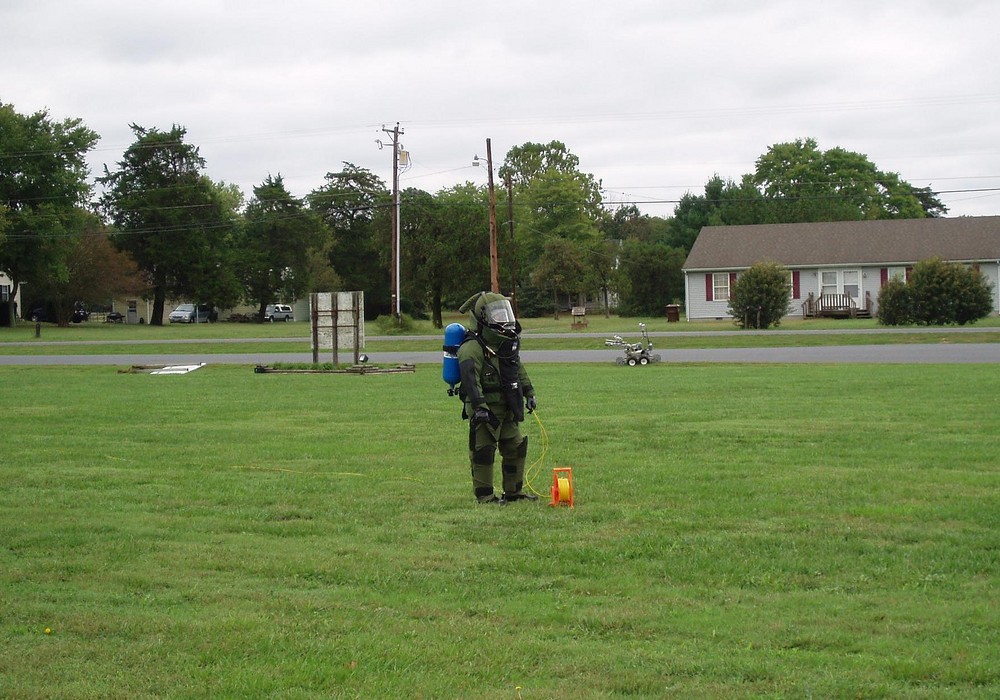
Bomb Squad Technician
A bomb squad technician (who may also be referred to as an explosive ordinance deactivation or EOD specialist) gets up close and personal with bombs, explosive devices, and sometimes chemical, biological, or nuclear materials. Any bomb squad tech or EOD specialist may be called up almost anytime 24 hours a day, 7 days a week, every day of the year. The military is the largest employer of explosive ordinance specialists, followed by city police departments. In the US, the average salary for this occupation is $54,000 plus benefits (including life insurance), although the US Navy offers a signing bonus of $50,000 to $150,000 every four years.
- Important notification about information and brand names used in this slideshow!
- Photo courtesy of Lee Cannon by Flickr : www.flickr.com/photos/leecannon/5085016985/
- www.smh.com.au/small-business/finance/the-worlds-most-dangerous-jobs-20131010-2va67.html
- http://english.people.com.cn/90778/8352310.html
- http://www.forbes.com/sites/jacquelynsmith/2013/08/22/americas-10-deadliest-jobs-2/
- http://finance.yahoo.com/news/10-of-the-most-dangerous-jobs-in-the-u-s--191643548.html

Skyscraper Window Cleaner
Did you love the Spiderman movies but can't find a job as a superhero? Consider becoming a skyscraper window cleaner. Job requirements include excellent physical fitness, the ability to pay careful attention to and to follow safety instructions, and a complete absence of any fear of heights. Most window washers work from a carefully anchored bosun chair on a rope, or from scaffolding, although on smaller buildings some cleaners will use ropes and rigging rock climber style. Although high-rise window washers have to be prepared to meet any kind of weather condition, jobs are not started in inclement weather, and fatality rates are actually very low. Skyscraper window washers in the US typically earn about $20 to $25 an hour, depending on experience.
- Important notification about information and brand names used in this slideshow!
- Photo courtesy of John Picken by Flickr : www.flickr.com/photos/picken/3310790242
- Dangerous Jobs Guide. High rise and skyscraper window washers. http://dangerousjobsguide.com/home/dangerous-cleaning-jobs/high-rise-and-skyscraper-window-washers. Accessed 25 January 2014.

Shipbreakers
Shipbreakers do ship breaking, the disassembly of ships for salvage of their parts. Once a common occupation in every port in every city in the United States and the United Kingdom, shipbreaking is mostly an occupation in the developing countries, where employers can take advantage of lower wages and less stringent safety and environmental regulations regarding the disposal of lead paint and asbestos. In both the US and UK, Navy ships are still usually broken down in local ports. American and British shipbreakers typically earn construction worker wages (about $20 to $25 an hour) with government benefits, but workers in Bangladesh and India may be paid $1 to $7 a day.
- Important notification about information and brand names used in this slideshow!
- Photo courtesy of Wranzl by Wikimedia Commons : en.wikipedia.org/wiki/File:Shipbreakingbangladesh2.jpg
- Langewiesche, William (2004). The Outlaw Sea: Chaos and Crime on the World's Oceans. London: Granta Books. ISBN 0-86547-581-4.

Bering Sea Fishermen
Thanks to the Discovery Channel, millions of people are familiar with the job of the Bering Sea fisherman, one of the most dangerous occupations on earth. The Bering Sea, lying at the top of the Pacific Ocean between Alaska and Russia, is one of the stormiest places on earth, and Bering Sea fisherman are expected to be able to handle heavy pots, nets, and tackle in swelling seas and in gale force winds. Bering Sea fisherman are expected to provide their own fishing licenses and their own gear, and they are paid for each season on the basis of a percentage of the catch, usually 1 to 10 percent of the haul. Salaries vary greatly, but average about $41,000 per year.
- Important notification about information and brand names used in this slideshow!
- Photo courtesy of Boris Kasimov by Flickr : www.flickr.com/photos/kasio69/9614251119/
- Discover TV. Deadliest Catch. http://dsc.discovery.com/tv-shows/deadliest-catch/about-this-show/hsw-bering-sea-fisherman.htm. Accessed 25 January 2014.
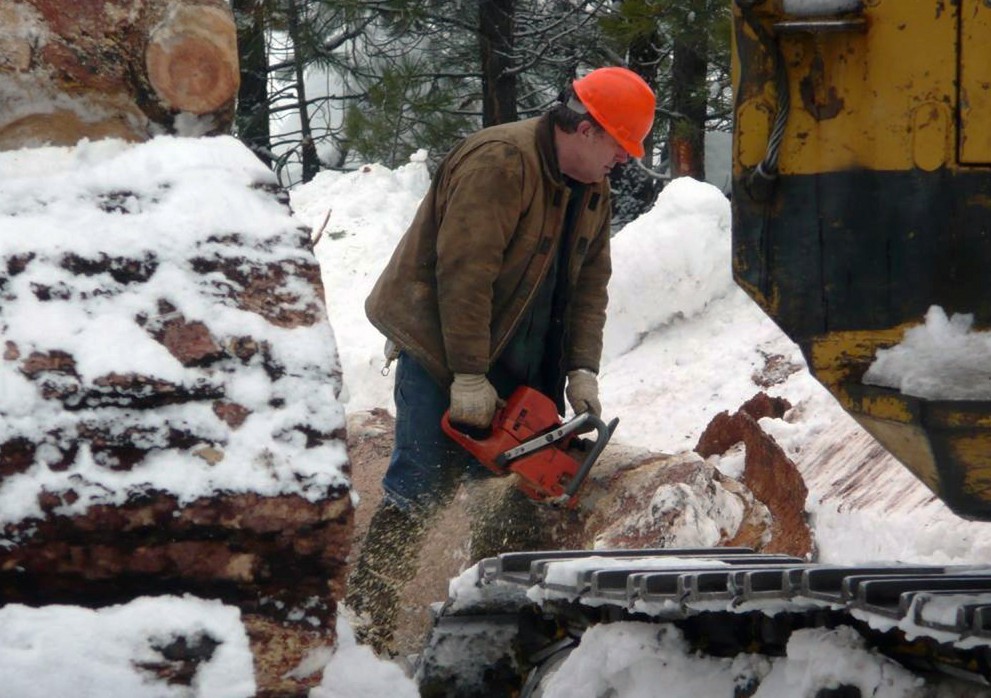
Logging Worker
Logging workers, once known as lumberjacks, chop down trees. Fellers cut down trees with chain saws or heavy machinery. Buckers trim the tops and branches out of the trees, and choke setters attach chains to the trees so they can be hauled out of the forest. All logging jobs are physically demanding and extremely dangerous. Loggers usually operate in remote locations on hilly, wet, muddy ground, where emergency help will be slow to come. About 1% of American loggers are women. In the United States, the median pay for fellers is $38,000 per year, and the median pay for other jobs in the logging industry is $34,000 per year. Most jobs in the industry in the US are in Arkansas or Mississippi, the Carolinas, or Oregon.
- Important notification about information and brand names used in this slideshow!
- Photo courtesy of U.S. Department of Agriculture by Flickr : www.flickr.com/photos/usdagov/4724865364/
- Dangerous Jobs. Logging Worker. http://dangerousjobsguide.com/home/dangerous-farming-fishing-and-forestry-jobs/logging-worker-lumberjack. Accessed 25 January 2014.
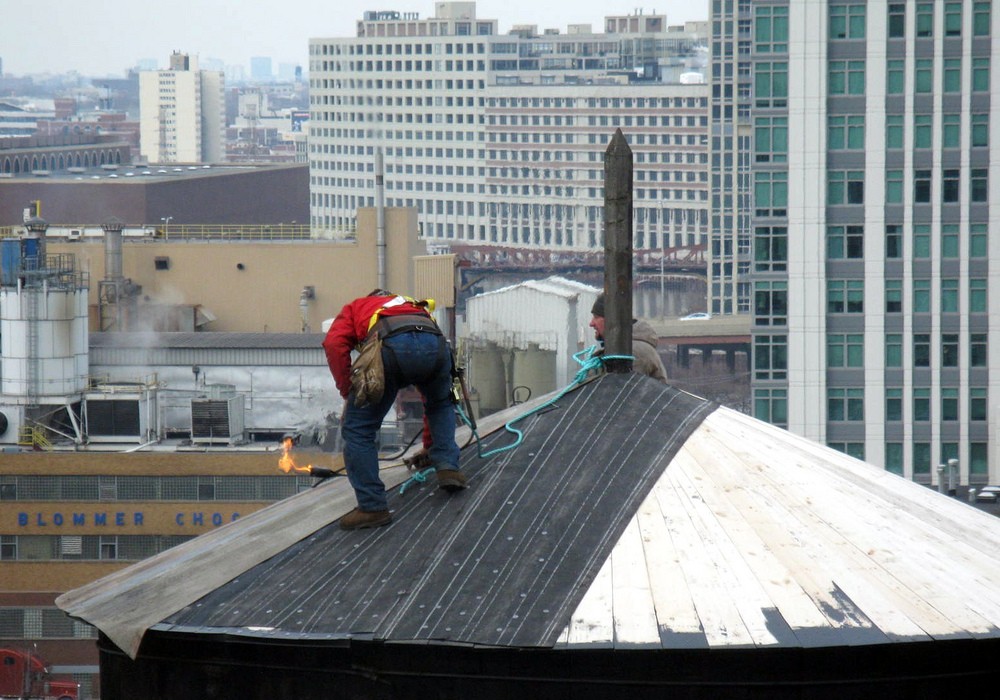
Roofer
Roofing is hot, hard, dangerous work. Roofers build and repair roofs, usually several stories off the ground, and usually with little or no safety equipment. The job involves climbing, lifting, kneeling, and the use of construction tools, and it has to be performed in blazing heat, freezing cold, wind, rain, and snow. Every year, about 1 in 300 roofers in the US dies on the job, and many more are injured by hot tar or mishaps with nail guns and other tools. In the United States, the Bureau of Labor Statistics estimates that the average wage of roofers in 2011 was $18.21 per hour, or $38,000 per year.
- Important notification about information and brand names used in this slideshow!
- Photo courtesy of David Wilson by Flickr : www.flickr.com/photos/davidwilson1949/5382984502/
- Dangerous Jobs Guide. Roofer. http://dangerousjobsguide.com/home/dangerous-construction-jobs/roofer. Accessed 25 January 2014.

Lineman
A lineman is employed by a utility company to install and maintain power lines. Linemen (and linewomen) work several stories in the air with high-voltage power lines in all kinds of weather. Frequently power line repair has to be performed after a natural disaster, and long shifts with little sleep in conditions where electricity (naturally), water, sanitation, and hot food are in short supply. The greatest safety risk to the line worker is electrocution, followed by falls. In the United States, line workers are among the best paid of all jobs that do not require a college education, on average about $27.60 an hour or $57,000 per year base pay, but with frequent opportunities to earn overtime or even double and triple time pay.
- Important notification about information and brand names used in this slideshow!
- Photo courtesy of Portland General Electric by Flickr : www.flickr.com/photos/portlandgeneralelectric/5179661563/
- Dangerous Jobs Guide. Lineman. http://dangerousjobsguide.com/home/dangerous-electricity-job/lineman. Accessed 25 January 2014.
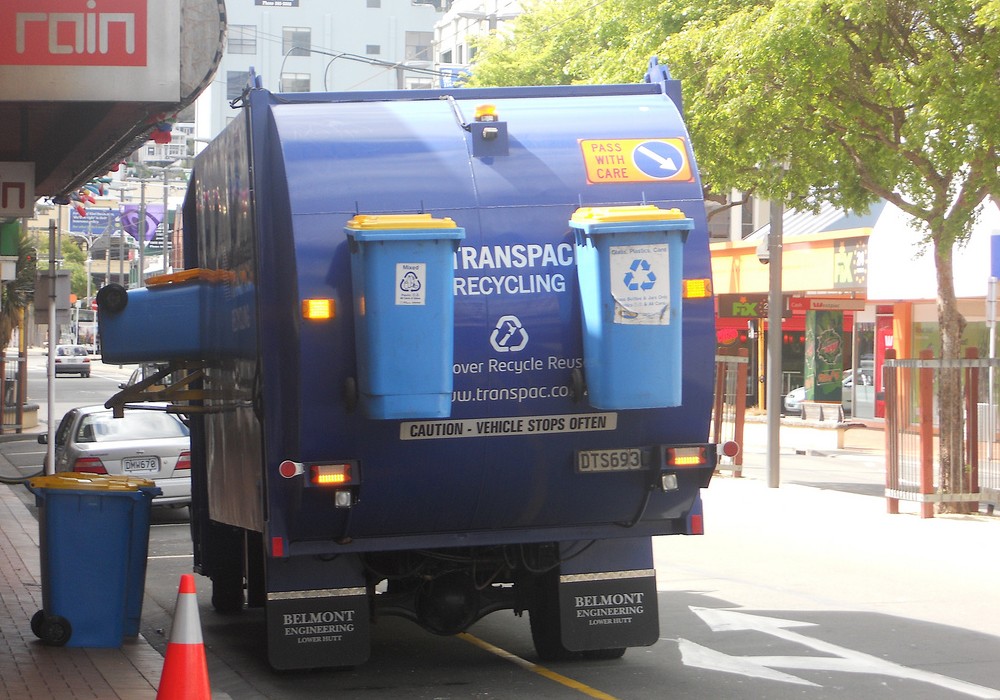
Waste Collector
Refuse and recyclable materials collectors, also known as waste collectors or simply as the garbage man or the trash man, have an exceptionally dangerous job. Every year about 1 in 300 waste collectors is killed on the job, and many more are injured. Waste collectors usually work in teams of 3 or 4, two workers in the cab, and two standing on a tiny platform at the back of the truck, stepping off the pick up cans of garbage and each stop to throw them in the truck. Garbage is compressed as it is fed into the truck. Garbage collectors may be employed by cities, but more often by private contractors. In the United States, they earn on average $16.50 per hour, or about $33,000 per year.
- Important notification about information and brand names used in this slideshow!
- Photo courtesy of Kristina D.C. Hoeppner by Flickr : www.flickr.com/photos/4nitsirk/6274211895/
- Dangerous Jobs. Refuse and Recyclables Collection Worker. http://dangerousjobsguide.com/home/dangerous-cleaning-jobs/refuse-and-recyclable-materials-collectors. Accessed 25 January 2014.
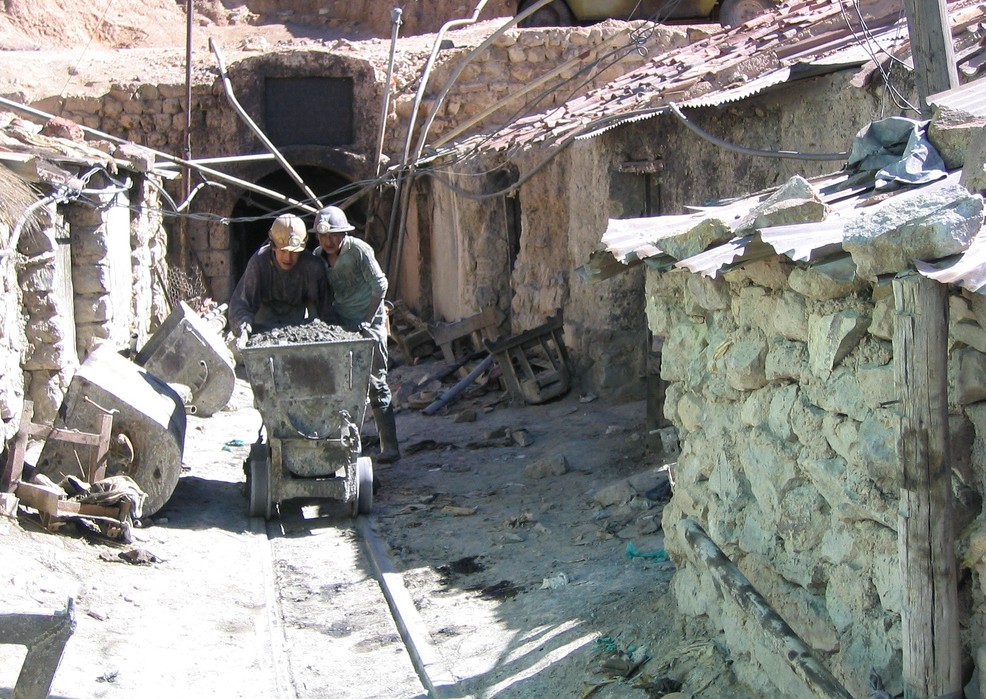
Miner
Miners use machines to drill through and break up rock, which they then load into carts on tracks to be sent to the surface. In the United States, mining is the fifth most dangerous occupation, with about 1 in 250 miners killed on the job every year. Cave-ins, elevator failures, electrical problems, poisonous gas and carbon dioxide buildup, explosions, and accidents with transportation and tools take their toll on miner health, as do chronic respiratory conditions caused by constant exposure to dust. In addition to good health, good judgment, and ability to perform on a team, most miners spend up to two years in vocational training in how to use mining machiens before going on the job. Average pay in the US is $49,000 per year.
- Important notification about information and brand names used in this slideshow!
- Photo courtesy of Phil Whitehouse by Flickr : www.flickr.com/photos/philliecasablanca/2052674486/
- Dangerous Jobs. Mining. http://dangerousjobsguide.com/home/mining-machine-operators. Accessed 25 January 2014.
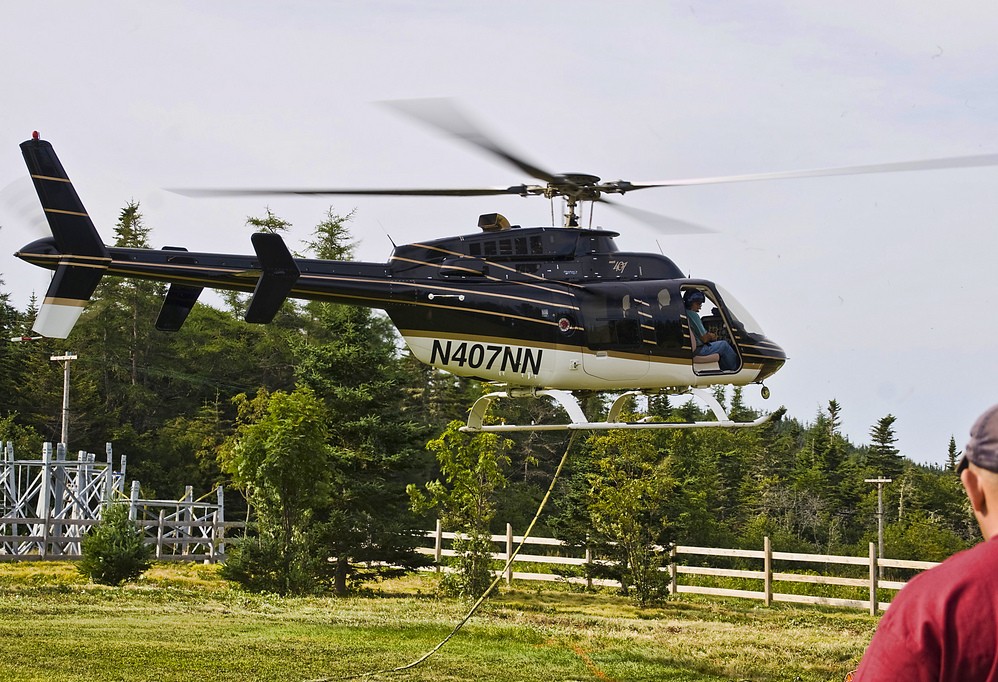
Helicopter Cable Worker
A helicopter high voltage cable inspector, also known as a helicopter cable worker, performs a vital--and scary--job by keeping high-tension electrical lines in good working condition. This specially trained lineman wears protective clothing that is directly connected to a high-power line, with as much as 500,000 volts of electricity, allowing him to directly touch the line for maintenance. Any contact with a ground, of course, results in instant death, and the helicopter cable worker's life literally depends on the skill of the helicopter pilot holding the helicopter steady above the work site. The worker may sit on the skid of the helicopter, or even hang on the wire itself. In the United States, this job pays on average $49,000 per year.
- Important notification about information and brand names used in this slideshow!
- Photo courtesy of liz west by Flickr : www.flickr.com/photos/calliope/3848759400/
- McLaughlin, Mary T. eHow. The Average Wage for a Helicopter Electrical LIneman. http://www.ehow.com/info_8720871_average-wage-helicopter-electrical-lineman.html. Accessed 25 January 2014.



























Your thoughts on this
Loading...